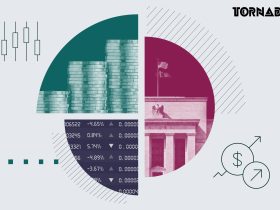The latest data from January has arrived, and there’s a surprise for many people. The Consumer Price Index, or CPI, which tracks how much things cost, went up by 0.5%. This is more than what many experts were predicting, and it pushed the annual inflation rate up to 3%. What does this mean for you and everyone else? Let’s break it down in a way that’s easy to understand.
What is the CPI?
The Consumer Price Index, or CPI, is a number that helps us understand how prices change over time in the United States. The government looks at a whole bunch of products and services, from groceries to rent, to see if their prices go up or down. When the CPI increases, it usually means that on average, things are getting a little more expensive for everyone.
Here’s What Happened in January
- In January, the CPI increased by 0.5% from December.
- This is the fastest rise we’ve seen since August 2023.
- Because of this increase, the annual inflation rate rose to 3% for the first time since June.
- Experts had expected it to be less, at just 0.3%, so this was an unexpected jump.
Core CPI Also Increased
There’s also something called the core CPI. This figure is important because it doesn’t include food and energy prices, which can change a lot. In January, the core CPI rose by 0.4% monthly, giving us an annual rate of 3.3%. This too was higher than many had anticipated.
Why are Prices Rising?
One key area contributing to the increase in CPI is housing. Shelter costs went up by 0.4% in January and accounted for around 30% of the overall increase in the CPI. This means that as people pay more to keep a roof over their heads, it affects the entire economy. Additionally, we saw notable price jumps in groceries, particularly with eggs, which skyrocketed by 15.2% in just one month—the biggest increase in nearly ten years!
Market Reactions
So, how did people react to this news? When the report came out, stock market futures took a tumble. The Dow Jones fell by over 400 points. Investors are worried this means the government might not lower interest rates anytime soon, which can make borrowing money for things like houses and cars more expensive. Josh Jamner, an expert from ClearBridge Investments, thinks this increase in inflation makes it less likely for the Federal Reserve to cut interest rates in the near future.
Federal Reserve’s Take
Federal Reserve Chair Jerome Powell commented on the situation, emphasizing that it’s important not to read too much into a single report. He said that the Federal Reserve focuses on a variety of economic indicators to make decisions rather than putting all their attention on just one number. This includes another index called the personal consumption expenditures price index, which might paint a different picture of the economy.
Looking Ahead
The January increase in CPI suggests that inflation is still a problem, even if it’s fluctuating. This has sparked discussions among economists about what the Federal Reserve should do next. The general consensus is that it is too early to say if these price increases will continue in the coming months. With various economic pressures, like global trade issues and rising costs for basic goods, the road ahead is uncertain.
Inflation Impact on Families
So, how does all of this impact families across America? As prices rise, families might find themselves spending more on everyday items. This can make it tough for some to balance their budgets. For kids and families, this might mean parents have to be more careful with spending, perhaps cutting back on non-essentials or planning their grocery shopping more carefully.
Conclusion
Overall, January’s CPI report highlights challenges in the economy. While it can feel overwhelming to hear about inflation going up, understanding where and why prices change can help families better prepare for the future. Keep an eye out for any new updates from officials as they monitor this situation closely.















Leave a Reply